I would like to make a plot using R studio similar to the one below (created in Arc Map)
I have tried the following code:
# data processing
library(ggplot2)
# spatial
library(raster)
library(rasterVis)
library(rgdal)
#
test <- raster(paste(datafold,'oregon_masked_tmean_2013_12.tif',sep="")) # read the temperature raster
OR<-readOGR(dsn=ORpath, layer="Oregon_10N") # read the Oregon state boundary shapefile
gplot(test) +
geom_tile(aes(fill=factor(value),alpha=0.8)) +
geom_polygon(data=OR, aes(x=long, y=lat, group=group),
fill=NA,color="grey50", size=1)+
coord_equal()
The output of that code looks like this:
A couple of things to note. First, the watershed shapefiles are missing from the R version. that is fine.
Second, The darker gray background in the R plot is No Data values. In Arc, they do not display, but in R they display with gplot. They do not display when I use 'plot' from the raster package:
plot(test)
My questions are as follows:
- How do I get rid of the dark grey NoData fill in the 'gplot' example?
- How do I set the legend (colorbar) to be reasonable (like in the ArcMap and raster 'plot' legends?)
- How do I control the colormap?
To note, i have tried many different versions of
scale_fill_brewer
scale_fill_manual
scale_fill_gradient
and so on and so forth but I get errors, for example
br <- seq(minValue(test), maxValue(test), len=8)
gplot(test)+
geom_tile(aes(fill=factor(value),alpha=0.8)) +
scale_fill_gradient(breaks = br,labels=sprintf("%.02f", br)) +
geom_polygon(data=OR, aes(x=long, y=lat, group=group),
fill=NA,color="grey50", size=1)+
coord_equal()
Regions defined for each Polygons
Error: Discrete value supplied to continuous scale
Finally, once I have a solution for plotting one of these maps, I would like to plot multiple maps on one figure and create a single colorbar for the entire panel (i.e. one colorbar for all the maps) and I would like to be able to control where the colorbar is located and the size of the colorbar. Here is an example of what I can do with grid.arrange, but I cannot figure out how to set a single colorbar:
r1 <- test
r2 <- test
r3 <- test
r4 <- test
colr <- colorRampPalette(rev(brewer.pal(11, 'RdBu')))
l1 <- levelplot(r1,
margin=FALSE,
colorkey=list(
space='bottom',
labels=list(at=-5:5, font=4),
axis.line=list(col='black')
),
par.settings=list(
axis.line=list(col='transparent')
),
scales=list(draw=FALSE),
col.regions=viridis,
at=seq(-5, 5, len=101)) +
layer(sp.polygons(oregon, lwd=3))
l2 <- levelplot(r2,
margin=FALSE,
colorkey=list(
space='bottom',
labels=list(at=-5:5, font=4),
axis.line=list(col='black')
),
par.settings=list(
axis.line=list(col='transparent')
),
scales=list(draw=FALSE),
col.regions=viridis,
at=seq(-5, 5, len=101)) +
layer(sp.polygons(oregon, lwd=3))
l3 <- levelplot(r3,
margin=FALSE,
colorkey=list(
space='bottom',
labels=list(at=-5:5, font=4),
axis.line=list(col='black')
),
par.settings=list(
axis.line=list(col='transparent')
),
scales=list(draw=FALSE),
col.regions=viridis,
at=seq(-5, 5, len=101)) +
layer(sp.polygons(oregon, lwd=3))
l4 <- levelplot(r4,
margin=FALSE,
colorkey=list(
space='bottom',
labels=list(at=-5:5, font=4),
axis.line=list(col='black')
),
par.settings=list(
axis.line=list(col='transparent')
),
scales=list(draw=FALSE),
col.regions=viridis,
at=seq(-5, 5, len=101)) +
layer(sp.polygons(oregon, lwd=3))
grid.arrange(l1, l2, l3, l4,nrow=2,ncol=2) #use package gridExtra
The output is this:
The shapefile and raster file are available at the following link:
https://drive.google.com/open?id=0B5PPm9lBBGbDTjBjeFNzMHZYWEU
Many thanks ahead of time.
devtools::session_info()
Session info ---------------------------------------------------------------------------------------------------------------------
setting value
version R version 3.1.1 (2014-07-10)
system x86_64, darwin10.8.0
ui RStudio (0.98.1103)
language (EN)
collate en_US.UTF-8
tz America/Los_Angeles
Packages -------------------------------------------------------------------------------------------------------------------------
package * version date source
bitops 1.0-6 2013-08-17 CRAN (R 3.1.0)
colorspace 1.2-6 2015-03-11 CRAN (R 3.1.3)
devtools 1.8.0 2015-05-09 CRAN (R 3.1.3)
digest 0.6.4 2013-12-03 CRAN (R 3.1.0)
ggplot2 * 1.0.1 2015-03-17 CRAN (R 3.1.3)
ggthemes * 2.1.2 2015-03-02 CRAN (R 3.1.3)
git2r 0.10.1 2015-05-07 CRAN (R 3.1.3)
gridExtra 0.9.1 2012-08-09 CRAN (R 3.1.0)
gtable 0.1.2 2012-12-05 CRAN (R 3.1.0)
hexbin * 1.26.3 2013-12-10 CRAN (R 3.1.0)
lattice * 0.20-29 2014-04-04 CRAN (R 3.1.1)
latticeExtra * 0.6-26 2013-08-15 CRAN (R 3.1.0)
magrittr 1.5 2014-11-22 CRAN (R 3.1.2)
MASS 7.3-33 2014-05-05 CRAN (R 3.1.1)
memoise 0.2.1 2014-04-22 CRAN (R 3.1.0)
munsell 0.4.2 2013-07-11 CRAN (R 3.1.0)
plyr 1.8.2 2015-04-21 CRAN (R 3.1.3)
proto 0.3-10 2012-12-22 CRAN (R 3.1.0)
raster * 2.2-31 2014-03-07 CRAN (R 3.1.0)
rasterVis * 0.28 2014-03-25 CRAN (R 3.1.0)
RColorBrewer * 1.0-5 2011-06-17 CRAN (R 3.1.0)
Rcpp 0.11.2 2014-06-08 CRAN (R 3.1.0)
RCurl 1.95-4.6 2015-04-24 CRAN (R 3.1.3)
reshape2 1.4.1 2014-12-06 CRAN (R 3.1.2)
rgdal * 0.8-16 2014-02-07 CRAN (R 3.1.0)
rversions 1.0.0 2015-04-22 CRAN (R 3.1.3)
scales * 0.2.4 2014-04-22 CRAN (R 3.1.0)
sp * 1.0-15 2014-04-09 CRAN (R 3.1.0)
stringi 0.4-1 2014-12-14 CRAN (R 3.1.2)
stringr 1.0.0 2015-04-30 CRAN (R 3.1.3)
viridis * 0.3.1 2015-10-11 CRAN (R 3.2.0)
XML 3.98-1.1 2013-06-20 CRAN (R 3.1.0)
zoo 1.7-11 2014-02-27 CRAN (R 3.1.0)
